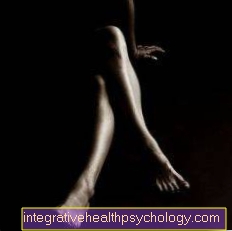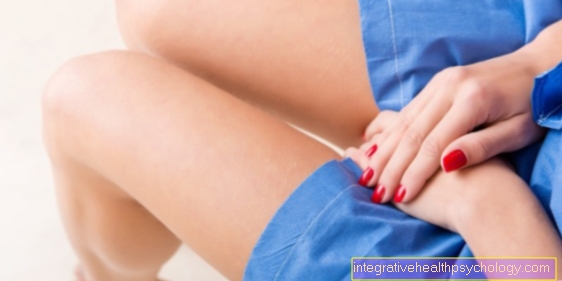Behavioral problems in children
introduction
The behavior of a child is considered to be conspicuous if it differs significantly from the norm, i.e. the general behavior of children of the same age. This description encompasses a wide variety of disorders that can have more or less impact on the life of the child and those around him.
These do not always necessarily have a disease value or should be viewed as a disorder, but are mostly a "normal" reaction to experiences and influences from the child's environment, depending on his emotional and psychological state.
Read more on this topic: Parenting aid - what is it?

How are behavioral problems expressed in kindergarten?
Many children in kindergarten are loud and boisterous. What is normal behavior for a toddler would be a severe behavior disorder for an adolescent.
A behavior is therefore only noticeable if it differs from the norm, i.e. the average of the children of the same age. Finding something like this in kindergarten is usually more difficult than in school and only minor disturbances can easily be overlooked.
Outwardly directed behaviors such as aggression and violence against other children and educators, extreme fidgety, the complete rejection of rules and authority, etc. are often noticeable in kindergarten.
Other behavioral problems, such as extreme shyness and anxiety, are more difficult to spot because toddlers can generally be very reserved and fearful. The so-called internalizing behavioral problems are often only discovered when they are very pronounced or persist into school age.
According to statistics, the number of young children with behavioral problems increases before school enrollment and requires training of educators and parents in order to avoid persistence into school age and thus a potential impairment of development.
also read: Attachment disorder
How do you recognize students with behavioral problems?
Many children with behavioral disorders are noticed for the first time or develop them for the first time in primary school. It is not uncommon for them to show this behavior only at school and behave much less problematically at home. Typical abnormalities are e.g. Fidgety and distraction, kicking, hitting and bullying classmates, refusing to do tasks and the like.
Furthermore, a behavioral problem can also manifest itself in withdrawal and shyness, separation fears, other anxiety disorders and similar symptoms. The teacher therefore plays an important role in such a situation, recognizing the behavior and taking the right measures to counteract it. Unfortunately, many parents therefore also blame teachers when their child becomes suspicious for the first time, although the causal factors are mostly to be found at home or in the immediate environment and in the child itself. Therefore, the cooperation between teachers and parents in the treatment of behavioral problems in elementary school age is extremely important.
Accompanying symptoms in children with behavioral problems
A psychological imbalance does not only show up in the child's social behavior, which is easiest to observe, but also in other areas of life. These symptoms can include children who are particularly anxious or shy, such as chewing their fingernails or eating and sleeping problems.
Children who are noticeable in everyday life through loud and disruptive behavior can be insecure and unhappy inside. With these children in particular, less obvious problems are quickly overlooked.
Self-injurious behavior and (re) wetting can also occur in children with behavioral problems. In older children, psychological distress is regularly expressed in the form of low self-esteem, depression and similar psychological problems.
Read more about this: Depression in Children
Classification of behavioral and emotional problems in children
The behavioral problems are divided into different categories in psychotherapy. This classification includes:
- Hyperkinetic disorder
- Conduct disorder
- Emotional disorder
- combined disorder of social behavior and emotional sensitivity
Hyperkinetic behavior / disorder
Hyperkinetic disorder in children is characterized by a high level of inattentiveness, impulsiveness and hyperactivity. As a rule, the behavioral problems that belong to the group of hyperkinetic disorders occur before the age of 7. The behavior of children that deviates from the norm is evident both in the home environment and in the elementary and school sector. It is estimated that around 3-5% of children are affected by hyperkinetic disorder.
Conduct disorder
Disorders of social behavior are characterized by a number of behaviors, including among others: strong and repetitive outbursts of anger, disobedient behavior, aggressiveness towards humans and animals, destruction of objects, lying and stealing, tyrannizing others and recurring arguments.
A disorder of social behavior is generally shown in an antisocial and aggressive behavior pattern that extremely exceeds the usual level of childish nonsense and teasing.
Antisocial behavior problems often occur in combination with hyperkinetic disorders, which are mainly characterized by impulsiveness, aggressiveness and hyperactivity. About 5% of all children show a disorder in their social behavior.
Emotional disorders / anxiety disorder
In the case of emotional disorders or anxiety disorders, the children show a higher degree of anxiety or fearful feelings than their developmental state anticipates. The emotional disorders include extreme separation anxiety as well as phobic and social anxiety. According to calculations, around 11-19% of all children are said to suffer from an anxiety disorder.
What are the underlying causes of behavioral problems in children?
There are many causes of behavioral problems in childhood. If this occurs for the first time when entering school or when making a comparable change in life, the emphasis is on being overwhelmed by the new situation and the loss of familiar structures. For example, many only children who were able to enjoy the full attention of their parents at home and had little contact with their peers do not feel comfortable in kindergarten with the many other children.
Even when they start school, some do not always cope with the increasing demands that are placed on them. Mostly these states are temporary and the children get used to the new situation, but sometimes the stress and the protest also show up in disruptive, attention-seeking and possibly aggressive behavior. Reasons for the excessive demands can be found in the upbringing, for example, if the children lack clear rules and structures, but also in the environment, the circle of friends or the child himself.
You might also be interested in: Raising children - you should know that
Even without excessive demands, conspicuous behavior can arise if a child is unhappy, stressed or otherwise influenced, for example.
Large school classes, overwhelmed teachers and parents, a large number of children with behavioral problems and the pressure to grow up quickly all contribute to the increased incidence of behavioral problems in children.
You can find more information on the topic here: Causes of behavioral problems in children and fear of loss in children.
Behavioral Problems - How is the diagnosis made?
Behavioral problems are, as the term suggests, noticeable. Teachers and educators or parents will therefore sooner or later become aware of this and, for example, seek contact with a (school) psychologist if behavior in the school or social environment becomes a problem. The diagnosis is then made there based on the reports from the parents or teachers and the behavior observed in the child, whereby a detailed examination is required in order to rule out mental disorders as a trigger for the abnormalities.
Who is making the diagnosis?
The diagnosis is made by a psychologist, psychiatrist, or psychotherapist who specializes in children. Although teachers and educators are usually the first to notice a behavior disorder, and many parents use various online tests and questionnaires before the diagnosis, the final diagnosis can only be made by an appropriate specialist.
Educational method for recognizing and understanding children with behavioral problems
The principle of “watching and understanding” children with behavioral problems is mainly used by teachers, especially in schools that teach many “problem children”. In the first step, the behavior of the child is observed and described in detail, as the spectrum of behavioral disorders is enormous and thus further differentiation of the behavior shown is possible. The second step is to try to empathize with the child and understand the reasons that drive them to this behavior.
This procedure is intended to shed light on the root cause of the problem behavior and to help the educator find the individual strategy for correcting this problem. Dealing with children with behavioral problems is usually exhausting, frustrating and tiring, as their backgrounds are not always clear. The procedure helps to be able to respond to the individual student and to find a starting point for the correct handling of him.
What tests are there to detect abnormal behavior?
Conspicuous behavior is difficult to define. The spectrum begins with slight deviations from the norm and ends shortly before manifest mental disorders. Since the definition of the behavioral problem is already difficult, the associated diagnosis and testing is not easier. Because it is not a defined clinical picture, but a multitude of different manifestations with and without disease value, there can be no test that clearly records every problem behavior.
Nevertheless, every child with suspected behavioral problems should be tested, as there are now very good test methods for the most common behavioral problems. This includes, for example, the screening for behavioral problems in schools (SVS), which is a questionnaire for teachers and differentiates between aggressive behavior, hyperactivity, internalizing disorders and problems with skills or resource use.
The CBCL (child behavior check list), which records emotional and behavioral problems, has long been established and can also be used for younger children. The Vineland scales focus more on the intellectual abilities of the child and are used to observe behavior. According to this principle of the symptom scale, there are many comparable tests that can be used at the therapist's discretion. If the child shows one of these typical behavioral disorders, these are detected relatively reliably. In the case of only slight or atypical abnormalities, however, these procedures reach their limits.
Many of the other tests that are also carried out with the affected children serve to rule out other causes, such as ADHD or mental illnesses, and to record their current mental well-being, including intellectual abilities. Differentiation is particularly important with ADHD, which many count as behavioral problems, as this disorder is treated completely differently (and with medication).
Establishing psychological development is also part of the diagnosis. From the results of these tests, a detailed anamnesis and a physical examination, the attending physician or therapist can then determine the presence of a behavioral disorder or order further examinations.
How are behavior problems in children treated?
Above all, abnormal behavior is not a disease. Accordingly, it cannot be "cured" or treated with medication.When treating a conduct disorder, psychotherapy and behavioral therapy come first. In contrast to ADHD, medication has almost no significance here.
Read more: Therapy and help for children and adolescents with behavioral problems
It is not only the therapy of the child that is particularly important, but above all of its parents and teachers, as these play a key role in the success of the therapy. In seminars you will be shown how to offer the child order and stability and how to encourage positive behavior and prevent negative behavior. The children should learn to follow the rules and to integrate into school life. This works, for example, by establishing clear structures and processes, active involvement in school activities, withdrawing attention in the event of inappropriate behavior and rewarding positive behavior.
The child's mental wellbeing must also be ensured and any problems dealt with. The exact procedure varies from child to child and depends on the cause of the abnormal behavior. It is important to respond to fears and worries, to promote talents and self-esteem and to show the child the advantages of integration.
Behavioral problems can also be treated as part of early intervention.
forecast
The prognosis varies from case to case and depends heavily on the causes of the behavioral problems, how pronounced they are and how they are treated.
If the reason can be found and eliminated, the children usually reintegrate into everyday school and family life without any problems.
If the cause persists or if the behavioral disorder has been present for a long time, the predominantly negative treatment of the child has an effect on his psyche. If children are labeled as "troublemakers", they usually stay in this pattern.
Do behavior problems stop in adulthood?
Almost all behavioral problems stop at some point because they no longer have the desired effect in adulthood. Unfortunately, that doesn't mean that no therapy is necessary. Untreated children who have not learned how to deal with their triggering problems and who were not given adequate structure run the risk of later psychological problems such as Develop depression. Early detection and therapeutic treatment can counteract this.


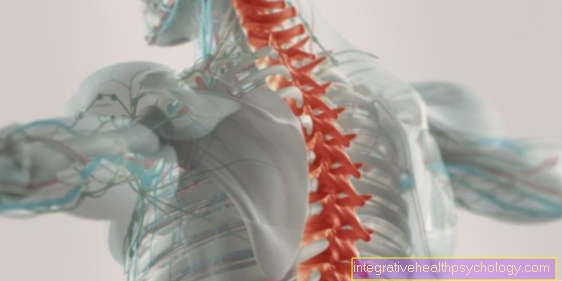


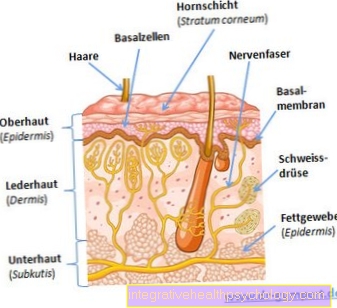
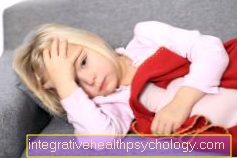

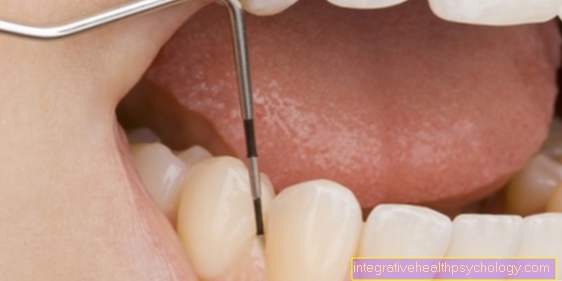

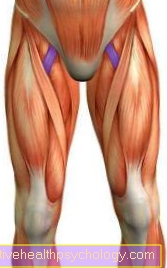
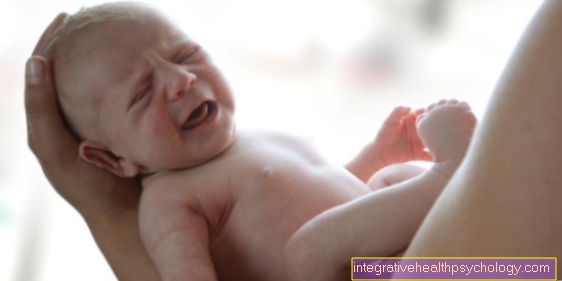
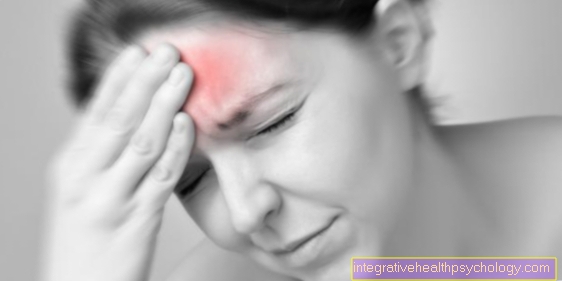

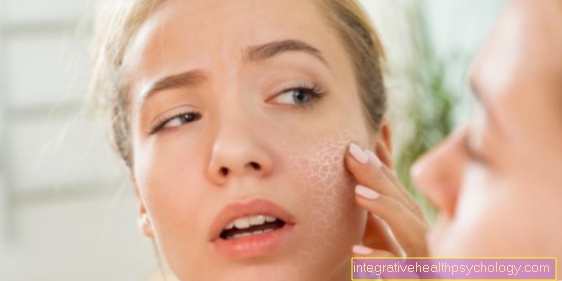


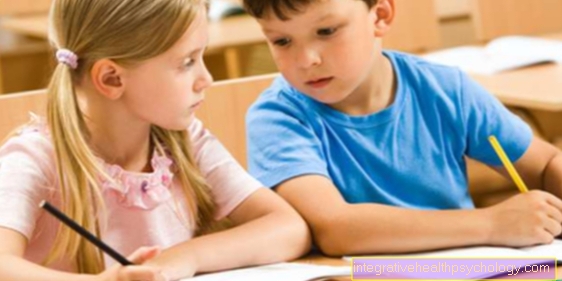

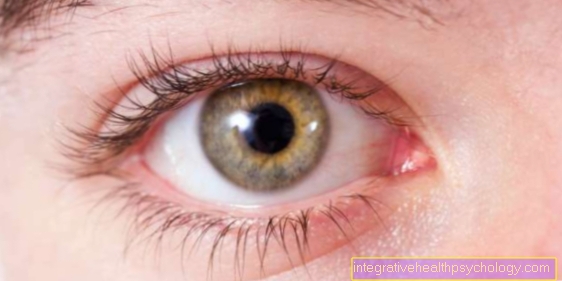
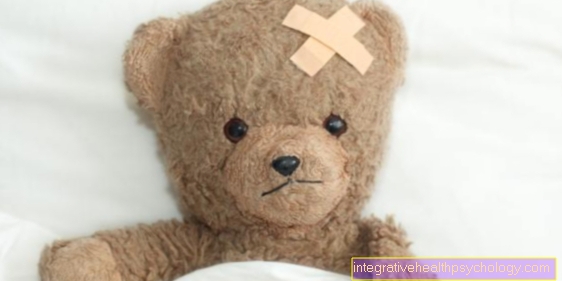


.jpg)


